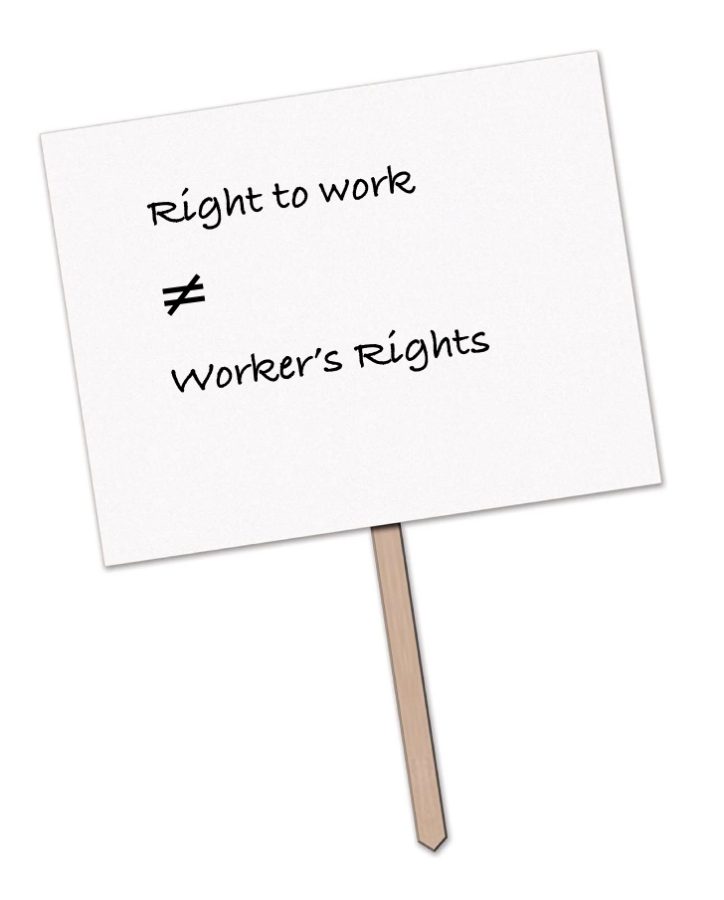The Confusing Case of Right to Work Laws
Right to Work laws are misnomers that prevent unions from effectively functioning. Ironically, they may be harming workers’ rights more than anything.
February 23, 2022
With only a cursory glance, one could mistake the “Right to Work” movement as one advocating for social justice and equality for all workers. However, despite its cheery name, Right to Work is actually designed by business leaders to weaken workplace unions.
A union is formed from a collective bargaining agreement—the workers agree to join together as one collective unit to have better leverage and negotiation power against employers. In some states, including California, unionized workplaces can require all members to either join the union or pay union dues. Right to Work undermines collective bargaining by allowing people to join a workplace without paying union dues while simultaneously receiving the benefits of a union (such as more leverage in negotiating better working conditions, higher pay, etc.), meaning that workers can get the benefits of a union without paying a dime.
Right to Work is extremely important to business leaders because they weaken the overall power of a union. Unions are forced to represent all of the workplace with lower and lower funds, eventually contributing to a decline in bargaining power. This is exactly what business wants—Right to Work laws allow employers to potentially uphold unethical working practices whether or not a union is already established.
For example, Amazon’s anti-union actions have created exploitative labor conditions, to the point where workers have been forced to pee in bottles to save time during their breaks. Right to Work laws stifle the formation of unions, which would help represent such workers by consolidating them into a unified negotiating force. Instituting these laws allows harmful workplace practices such as Amazon’s to persist. For the workplaces that have already unionized, Right to Work laws weaken bargaining power for workers, effectively weakening the existing union since it doesn’t receive adequate dues. Janus v. AFSCME effectively implemented a federal right to work statute on the basis that being forced to join a union violates a worker’s freedom of speech.
These attacks on labor by Right to Work laws have been incredibly harmful to workers, especially during the COVID pandemic. Some workers in 2020 were forced to go to their jobs despite the danger and risk of contracting COVID. A union would have had the collective bargaining power to make sure its employees were not subjected to dangerous working conditions; without strong representation, though, workers had no way to change their workplace. Similarly, in terms of wages, inflation is at an all-time high right now, and many workers can not afford the cost of living. A stronger union could negotiate with the workplace to raise wages or otherwise include more benefits, but the weakening of union bargaining means that far less of this is possible.


